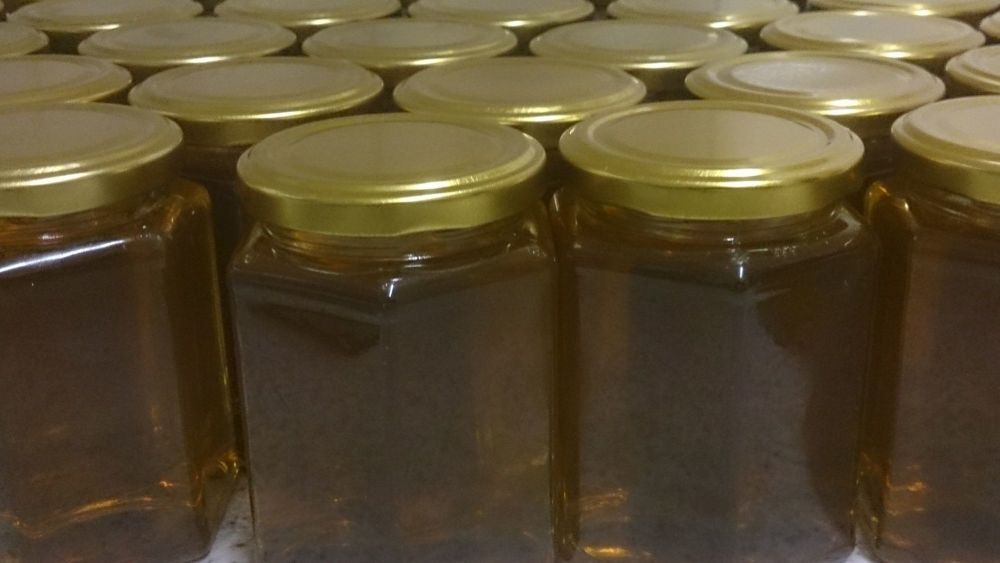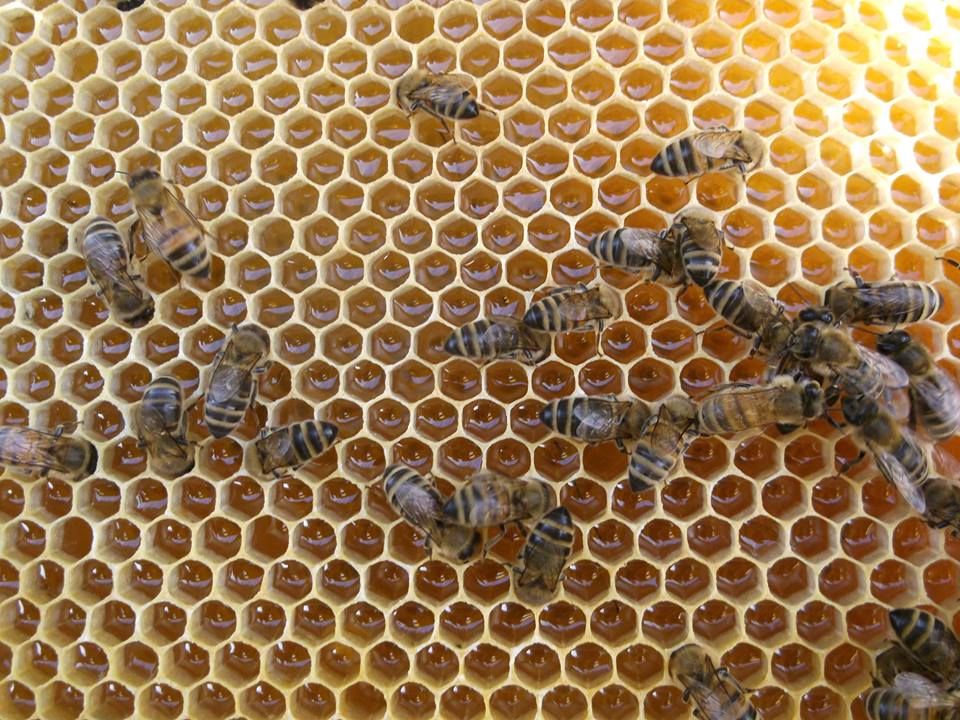Bees Eat Honey, Don't They?
Posted on
We all know bees eat honey. But do they?

There are approximately 280ish different types of bee in the UK. Only one of them is the honey bee. 26 are bumble bees and the others are all solitary bees.
All bees sup nectar from the flowers they visit. This gives them the energy boost they need for flying.
Female bees will collect nectar and pollen to take back to their colony/nest.
Female solitary bees build a cell, provision it with nectar and pollen, lay an egg and then seal the cell. She will then build another cell. The egg will hatch, eat the nectar and pollen and then pupate before emerging the following year to continue the cycle. The female bee only lives a few weeks and doesn’t make honey.
Bumble bee queens will collect and store some nectar in little “wax pots” before they start to lay their first batch of eggs. This nectar helps to feed the queen bee whilst she is incubating her eggs. Once the nectar runs out she will need to leave her eggs whilst she collects more. When her first batch of bees emerge they are all girl worker bees. Some of them will stay in the nest with the queen bee and some will take over the foraging duties, bringing nectar and pollen back to the hive to feed the growing colony of bumble bees. Bumble bees store a small amount of nectar for a short time, but they don’t make honey.
The only bees who make honey are honey bees. Why do they make honey? Well they are the only bees who don’t die out, or hibernate during the winter. During the winter the colony is about 10,000 strong. This number of bees is needed to keep the colony warm during the winter months.
During the winter months the colony clusters and the bees on the outside will “shiver” to generate heat and to keep the cluster warm. This takes up a lot of energy at a time when the honey bees are unable to leave the hive to collect more food i.e. nectar. During times of plenty any nectar collected which isn’t needed for immediate use is stored for when it is needed.

Nectar is mostly water and sugars with some amino acids, vitamins and a few minerals thrown in for good measure. Nectar can be up to 80% water. Water and sugars will ferment into alcohol if stored for more than a short time. Bees can also suffer from bad tums, and if they used fermenting nectar they would get a bad tum. To stop the nectar from fermenting the moisture content needs to be reduced to less than 20% moisture. To do this the bees spread the nectar out in cells in the hive, bees in that area fan their wings to evaporate the moisture. Once the moisture content is below 20% (usually around 18%) the honey (as it is now) will keep until it is needed. Well it would if it were not for the fact that being hygroscopic honey draws moisture into itself. So the clever little bees cover each cell containing honey with a thin coating of beeswax. Being waterproof the beeswax stops the water getting into the cell and “spoiling” the honey.
Before using the honey the honey bee needs to dilute the honey. To do this they mix it with a small amount of salvia which they work into the honey, before sucking up the resulting thinner liquid.
Honey bees are also workaholics. All the time the weather is favourable and there is nectar available they will collect it and store it. On average a colony of honey bees needs 40 pounds of honey to see them through the winter, but most colonies will collect and store far in excess of that amount. This is the surplus the beekeeper can take for his/her own use. Although some beekeepers will take as much honey as possible and feed back sugar water, many beekeepers will only take what the bees don’t need.

So if honey is just concentrated nectar it must be better to feed bumble bees diluted honey? Well actually no because honey can spread diseases amongst bees.
When bees (of all types) collect nectar from the flowers to take back to their nests/colonies they suck it up into their honey crop. This is a pre-stomach. Almost like an inflatable balloon inside the bee which is used to carry the nectar. Once back at the nest/hive the nectar is regurgitated.
At the honey bee hive it is passed from bee to bee as enzymes are added and the drying out process is started. If the bees happen to have one of the bee diseases the pathogens or spores can also be added to the nectar along with the enzymes.
Whilst honey bee diseases cause no harm to humans, honey is well known to spread diseases between colonies and beekeepers are advised not to feed their bees honey from another colony.
Whilst no research has been done on the spread of disease to bumble bees by feeding them diluted honey, it is known that some of the honey bee diseases can be passed to bumble bees. The logical assumption can therefore be made that feeding honey to bumble bees could very well introduce them to a disease which they would otherwise not have come into contact with.
Whilst a weak sugar and water solution is “empty” food for a bee as it contains only carbohydrates and has no other nutritional value, it is better to feed a struggling bumble bee sugar water. The sugar water will give the bee the energy it needs to get on with the business of collecting food for the colony without risking passing on disease which could be taken back to the colony.
Sugar water should never be left out for bees to find though - please check out my previous blog "Why Feeding Sugar Water to Bees is a Bad Idea"
Add a comment: